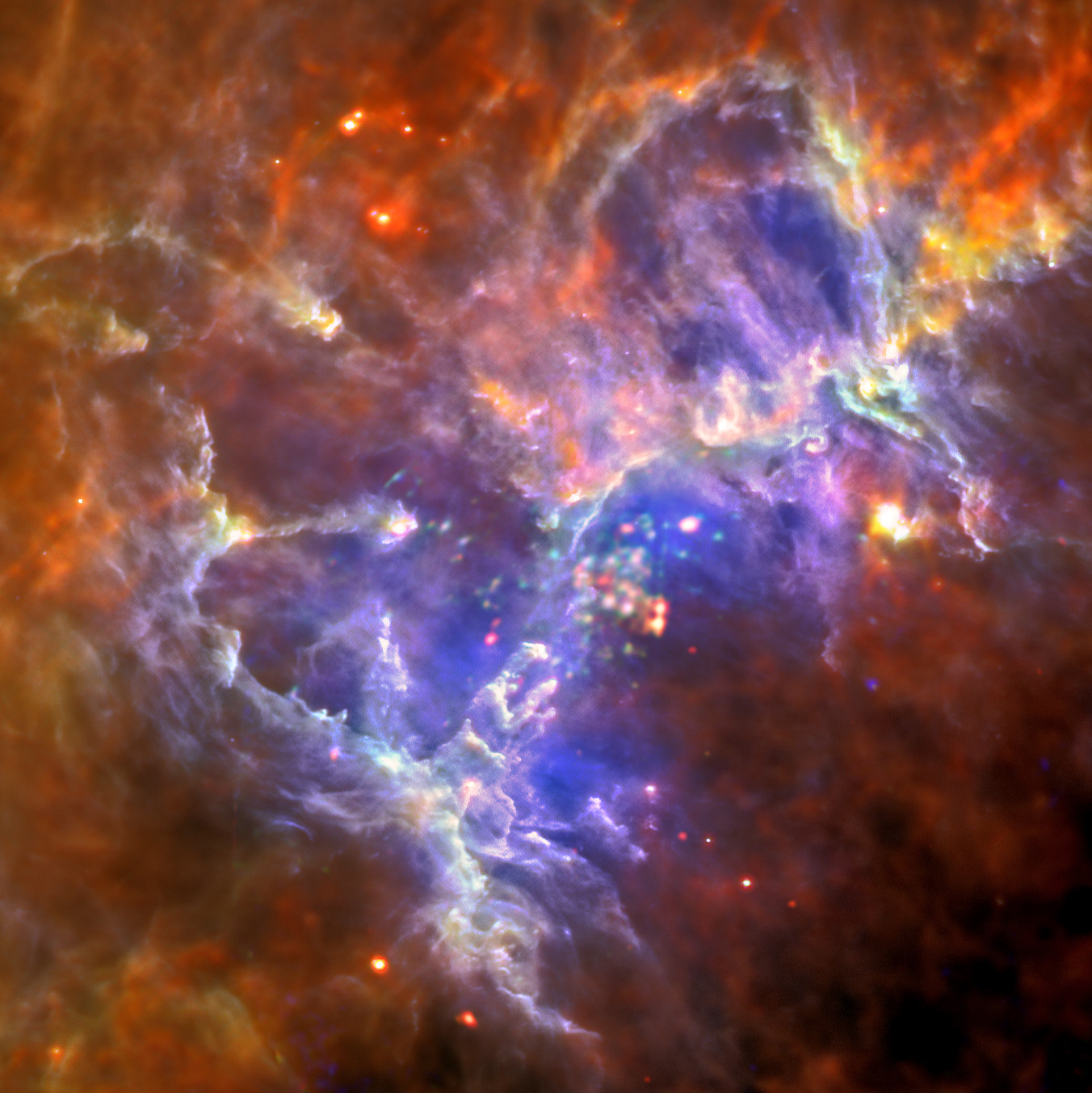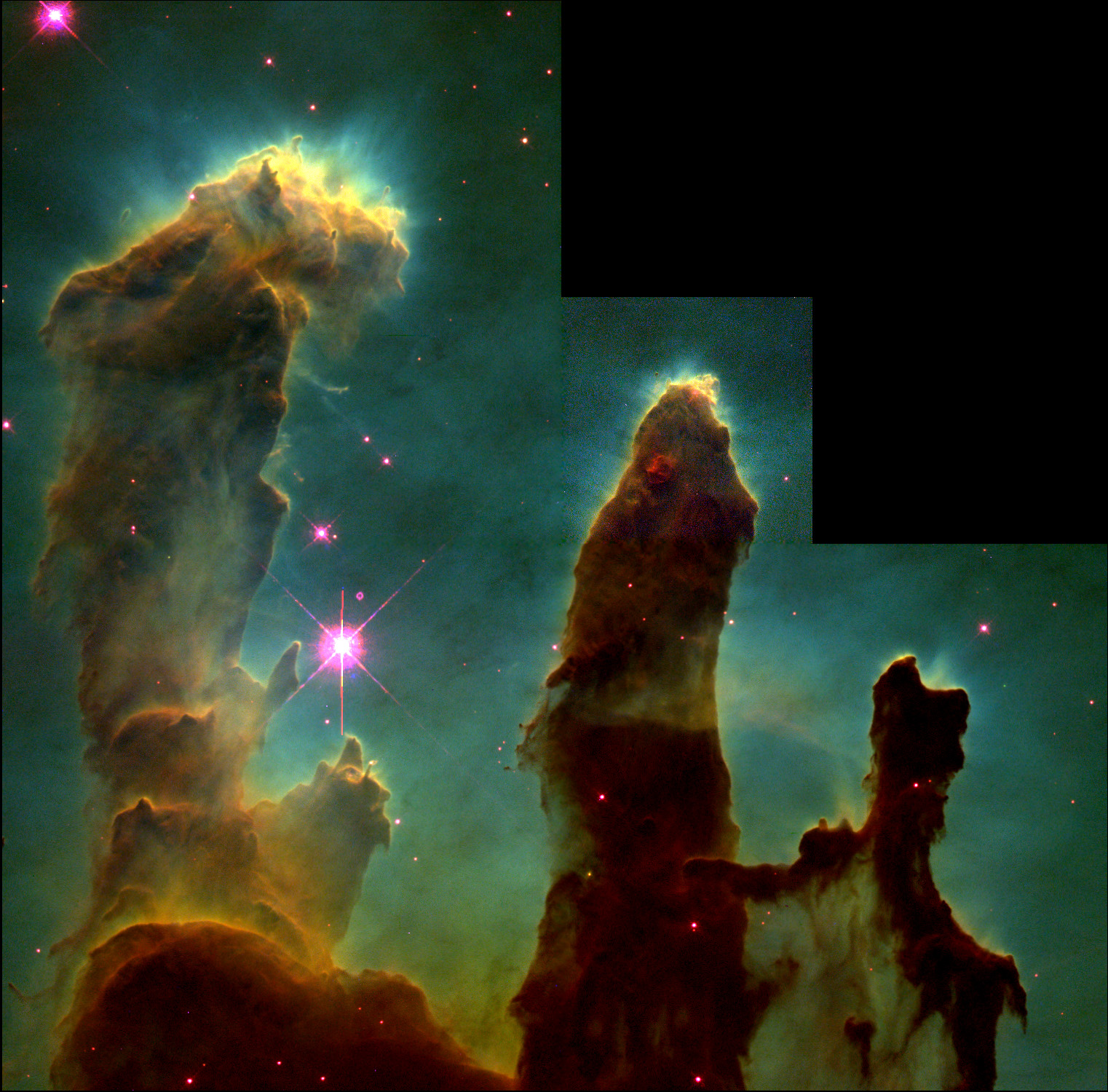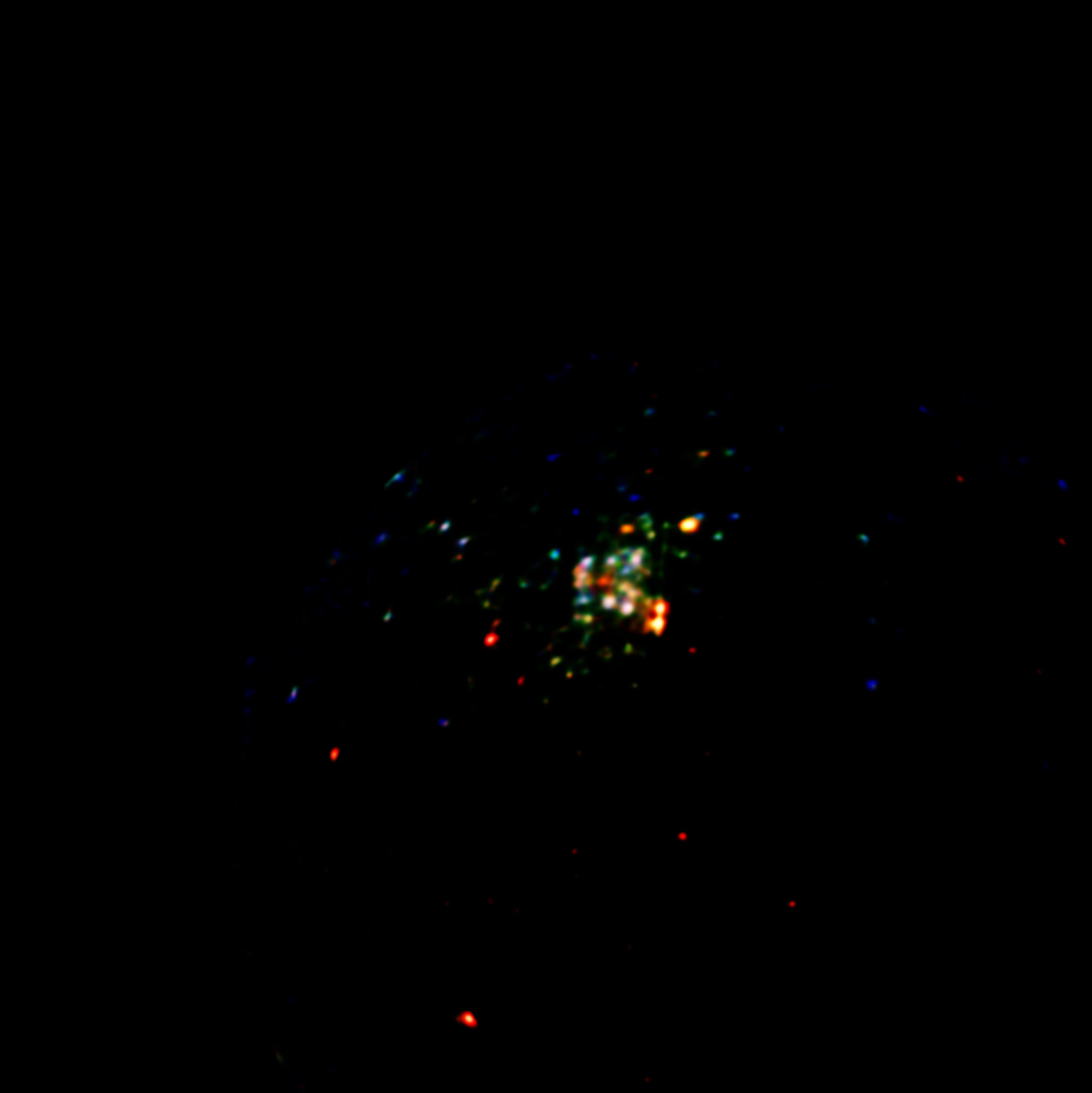Iconic Eagle Nebula Soars in Eye-Popping New Images

A pair of European space telescopes has snapped a stunning new view of one of the most iconic deep-space objects ever seen: the Eagle nebula.
The Eagle nebula is a distant star-forming nest of gas and dust about 6,500 light-years from Earth in the constellation Serpens. The nebula gained notoriety in 1995, when NASA's Hubble Space Telescope revealed vast pillar-like structures — the so-called "Pillars of Creation" — in a picture that remains one of the most iconic space photos ever recorded.
The new Eagle nebula photo, released today (Jan. 17), is actually a combination of views from the European Space Agency's infrared Herschel space observatory and the XMM-Newton X-ray telescope.
The combined observations of the two spacecraft, as well as infrared views from telescopes on Earth, reveal the Eagle nebula as a colorful swirl of gas and dust with a dense core of stars, which appear in shades of red, green, blue, yellow and orange. The stars belong to the star cluster NGC6611. [See new photos and video of the Eagle nebula]
For astronomers, the new views of the Eagle nebula are a must-see in order to observe small clumps of material known as "evaporating gaseous globules," or EGGs, in the nebula's pillars. Astronomers have long-suspected that stars were being born inside some of the Eagle nebula EGGs, but the Hubble Space Telescope was unable to peer inside them using its visible light camera, ESA officials said.
"In visible wavelengths, the nebula shines mainly due to reflected starlight and hot gas filling the giant cavity, covering the surfaces of the pillars and other dusty structures," ESA officials explained in a statement. "At near-infrared wavelengths, the dust becomes almost transparent and the pillars practically vanish. In far-infrared, Herschel detects this cold dust and the pillars reappear, this time glowing in their own light."
The Herschel observatory's infrared images revealed wispy tendrils of dust and gas permeating the Eagle nebula. The XMM-Newton spacecraft, meanwhile, helped track ultraviolet light from the nebula's hot stars.
Breaking space news, the latest updates on rocket launches, skywatching events and more!
Past infrared observations of the Eagle nebula have revealed hints that the iconic Pillars of Creation inside the Eagle nebula may actually no longer exist, and the new observations appear to support that scenario, ESA officials said. The observations suggest that one of the stars inside the NGC 6611 cluster exploded about 6,000 years ago, erupting in a supernova that destroyed the nebula's "Pillars of Creation."
Since the Eagle nebula is 6,500 light-years away, its light takes about 6,500 years to reach Earth and telescopes today reveal the nebula as it existed in the distant past. The supernova event and destruction of the pillars won't be visible for at least another few hundred years, ESA officials said.
Follow SPACE.com for the latest in space science and exploration news on Twitter @Spacedotcom and on Facebook.
Join our Space Forums to keep talking space on the latest missions, night sky and more! And if you have a news tip, correction or comment, let us know at: community@space.com.

Space.com is the premier source of space exploration, innovation and astronomy news, chronicling (and celebrating) humanity's ongoing expansion across the final frontier. Originally founded in 1999, Space.com is, and always has been, the passion of writers and editors who are space fans and also trained journalists. Our current news team consists of Editor-in-Chief Tariq Malik; Editor Hanneke Weitering, Senior Space Writer Mike Wall; Senior Writer Meghan Bartels; Senior Writer Chelsea Gohd, Senior Writer Tereza Pultarova and Staff Writer Alexander Cox, focusing on e-commerce. Senior Producer Steve Spaleta oversees our space videos, with Diana Whitcroft as our Social Media Editor.



